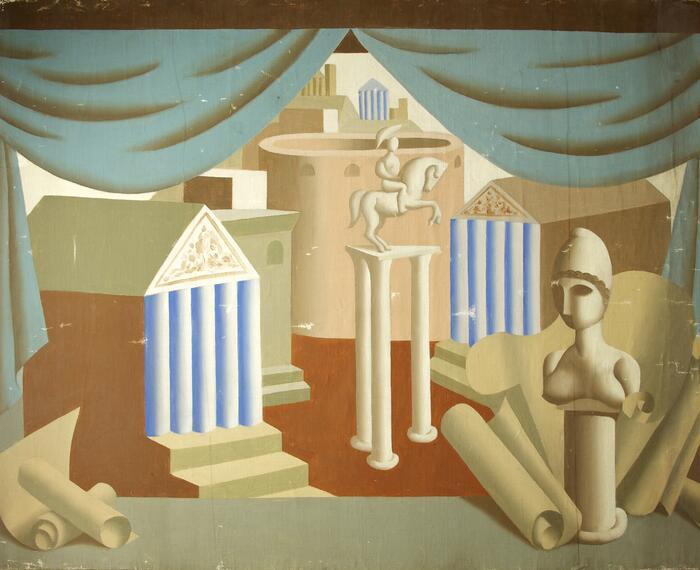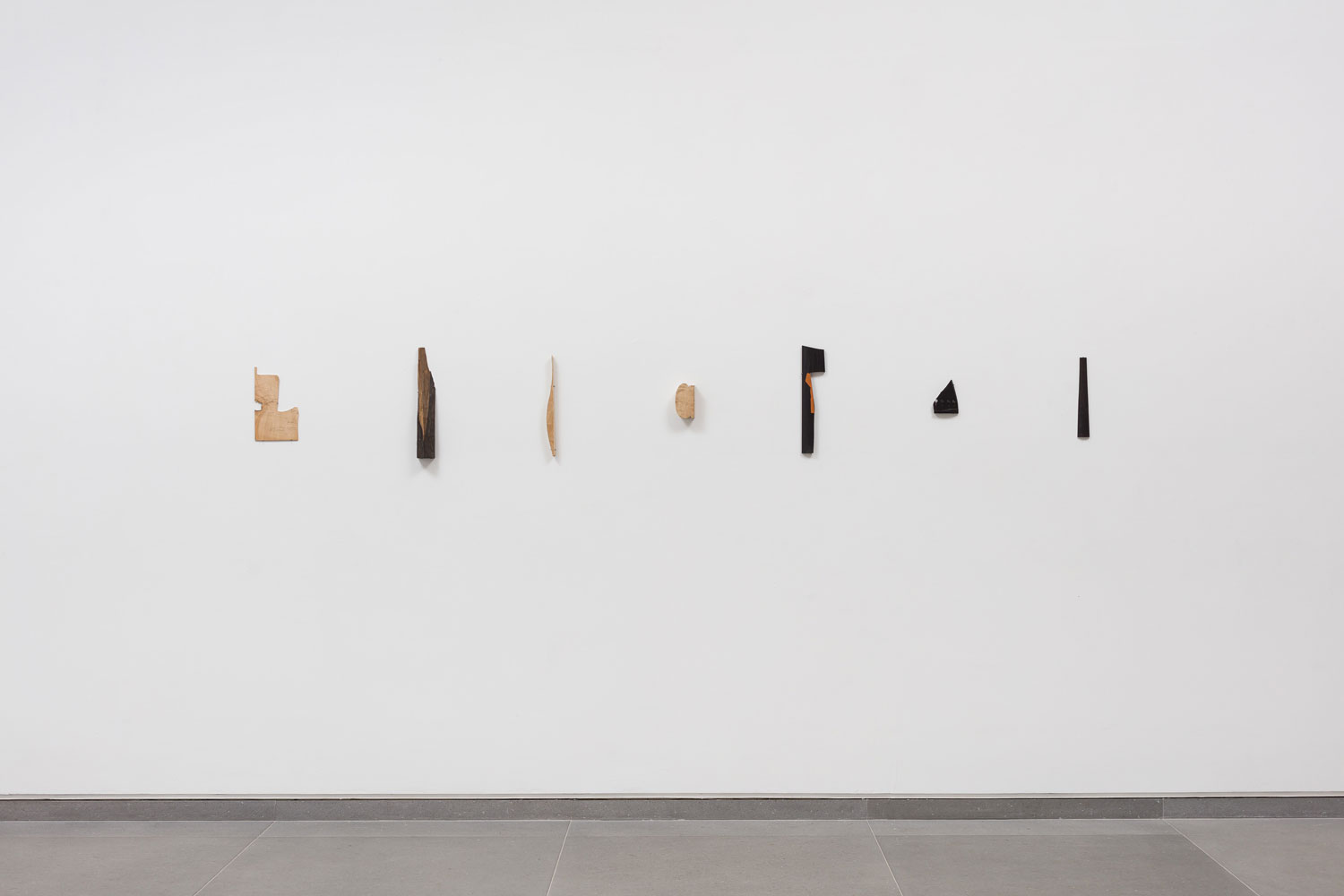


Untitled, 2023-24, Tonewood fragments from a luthier’s workshop, All images courtesy the Artist and Cabinet, London
Cabinet London, 132 Tyers Street Vauxhall Pleasure Gardens London, SE11 5HS
8 March - 6 April 2024
When entering the discreet space of Cabinet Gallery to view the show Music by Kobby Adi, we might assume that we have walked into an empty room with curious architectural protrusions. That is until our eyes focus on the paired back and subtle works on the walls which invite an increased awareness of one’s own body, firmly grounded within space and time, and crucially relating to the surrounding environment.
There are several thermometers, individually fixed to each of the angular walls in the space. Aesthetically, they are reminiscent of nautical thermometers with a polished silver circumference and a temperature gauge ranging from -20 to 60 degrees Celsius. Each one has a precise and fixed inscription, demarcated by a diverging line that indicates the average internal temperature of a specific animal - alpaca, goat, sheep, pig & rabbit. On the day I visited, the thermometers inside the gallery indicated a balmy 20 degrees Celsius and I note the internal temperature of a rabbit as sitting between 38.6 - 40.1 degrees (for comparison the human body typically ranges from 36.1 - 37.2). Though merely a few degrees separates myself from that of the animals referenced, I am made aware of the mysterious and evolutionary dichotomy at play. If my temperature were the same as a Rabbit, I might experience a hallucinatory fever. Likewise, if the Rabbits temperature dropped to the level of a human, they could fall into a coma. This reading makes one conscious of the semantic qualities that nature holds and the spiritual disposition that has historically existed between humans and animals – the two operate in a state of symbiosis, tangentially reaping the resources of a shared land whilst, notably, animals have held significant roles in religious, ceremonial and visual cultures for thousands of years. What is prescient in this show is the realisation that, atomically speaking, we are all one in the same, existing and operating within a holarchy.
The specificity of the animals selected in the show reflects what can be found in Vauxhall City Farm (located directly opposite the gallery). Bridging these associations allows for an experience to unfold that taps into a physical and nostalgic memory – our formative understanding of the natural world is often experienced through the depiction of animals and their accompanying sounds, portrayed in children’s popular culture, storytelling, folklore or on visits to farmyards.
Discreetly presented on the wall is a letterpress edition that lists all the works and their dimensions, the very last item being the list itself. This cyclical action feels akin to the ancient Ouroboros mythology, that which represents the concept of eternity and the endless return, visually depicted as a creature consuming itself. It is a common symbol in alchemy and, in the context of this show, reads like an echo perforating a quiet space.
In the same room a series a tonewood fragments from a luthier’s workshop are installed on the wall in a single line. Varying in colour, these wooden pieces present themselves in abstract forms that at first glance look like the remnants of carving tools. Historically, a luthier is a craftsman who builds string instruments, often using glue made from animal hide. Once more I am reminded of the sacrificial processes undertaken to create an object that may be preserved forever, producing music that could exist in a state of infinite circulation. There is something rhizomatic about the material and spiritual exchange that takes place between human, animal and object - and this sense of holism is reflected throughout the show. By deliberately not providing us with a press release to anchor our conceptual thinking, Adi produces a currency that simultaneously embraces the legacies of conceptual art whilst resisting a prescribed instructional and institutional approach to interpretation.
As I wander downstairs to the basement, I encounter a short 16mm film which depicts a foot playing with a large bone. The bone seems to be following the foot, magnetised to it, at points dancing around it and at other times suspended in a moment of paranormal stasis. It reminds me of the term ‘Paraconceptual art’ coined by Susan Hiller – that which treads the line between paranormal activity and conceptual art. Looking closely at the video I can gauge (or at least assume) that it is playing backwards and altered in speed. I later learned from the gallery that the editing was done to the actual film reel before it was digitised. This suggests a physical and somewhat alchemic process, echoing the way in which a luthier carries out their own work.
Adi has skilfully presented works with minimalist affordance prompting metaphysical considerations that resist any prescribed notions commonly associated with interpreting and understanding contemporary art. This brings about a relevancy that at once feels materially curious and conceptually groundbreaking.
Jordan Mouzouris,
Curator, Digital
Cabinet London,
132 Tyers Street Vauxhall Pleasure Gardens
London, SE11 5HS
Gallery Opening Hours: Wednesday to Saturday, 12.00 - 6.00pm